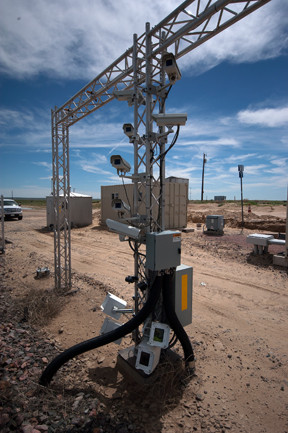A: There are three main methods railroads use to check freight cars, or rolling stock.
The first is manual inspection. Railroads often have a person designated to inspect equipment at certain locations, particularly in yards. This person, sometimes called a car knocker, literally walks alongside a parked train looking for defects. Depending on the person and the level of detail required by their supervisors, a car knocker may spot bad wheels, missing brake parts, broken hand grips, and so on. That person may only have the power to bad order a car for further inspection, but in certain cases, the inspector may be empowered and expected to make small repairs themselves — often with tools such as an acetylene torch and a hammer.
A second method, is a maintenance schedule that railroads and car owners may also adhere to a certain important parts such as brake valves, or wheel truing after a certain number of miles of wear. Maintenance schedules are ideal for parts that receive wear at largely predictable rates, or which are in unit train service, such as grain hoppers or intermodal well cars.
The third method of relying on railroad-wide network of sensors has grown in the past 20 years. Among the simplest are wheel impact load (WILDs) and hot box detectors that report when a wheel slams against a rail too hard or when an axle bearing exceeds a certain temperatures. There are also hot wheel detectors, wheel crack detectors, and lately, a host of machine-vision technologies that use special light spectra that enable cameras to check for such things as dangling or broken air hoses or freight car equipment, poor truck alignment, wheel profiles, missing or damaged bolts, and more.
This third and last method enables railroads to rely on computer detection of minor problems so they can plan to set out freight cars for maintenance rather than waiting for a freight car part to breakdown in service, or literally catch on fire. This type of monitoring also builds a record that railroads and car owners could use to detect other problems such as poor repair work or faulty parts, problem track, and inexperienced train handling. — Trains staff















The biggest defect I “HEAR” is the huge number of FLAT WHEELS in a freight train. I even heard a few on UP’s 4014 Passenger train last month. Why would UP let a flat wheel out on the main with so much PR at stake? I would think a Flat Wheel would slowly destroy any freight car from the constant pounding and people riding in the passenger cars on any train certainly would not appreciate the continual thumping!